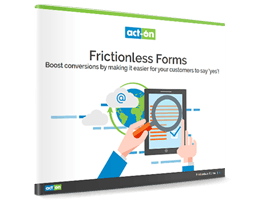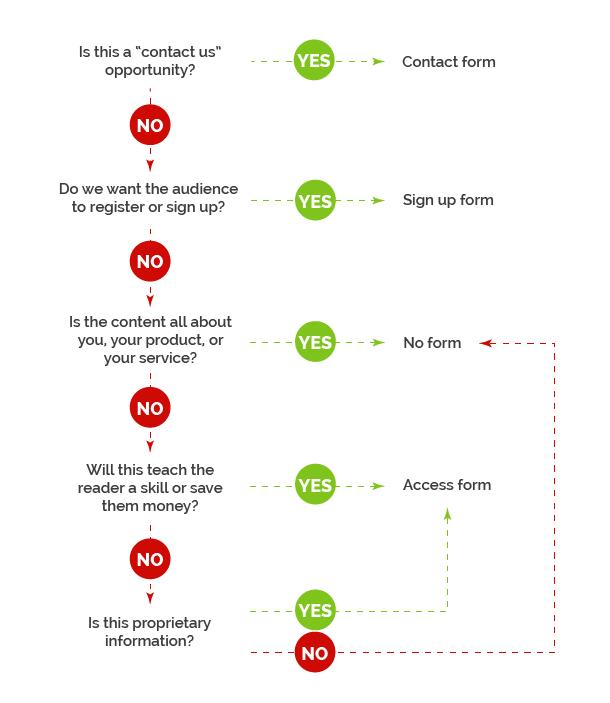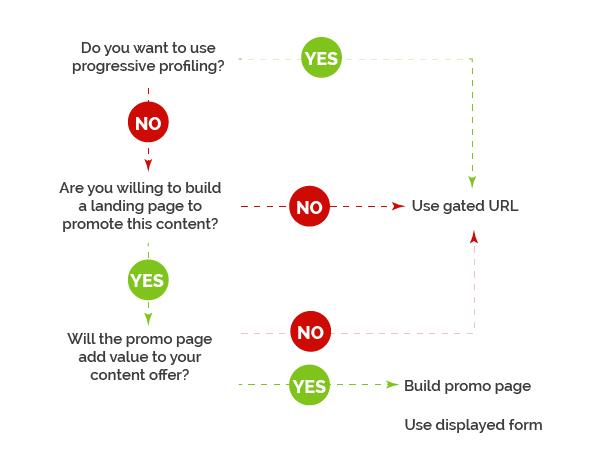In order to build a relationship with your audience, you need content – lots of it – and you need to make it available across various media and  multiple channels. Lots of organizations make a common mistake: They wait until a prospective customer is 80% – 90% of the way through the buying process before they create an opportunity to get that prospect’s information using a “Contact Us” form.
multiple channels. Lots of organizations make a common mistake: They wait until a prospective customer is 80% – 90% of the way through the buying process before they create an opportunity to get that prospect’s information using a “Contact Us” form.
In a conventional marketing strategy (especially if you have a long sales cycle) this may seem like good sense, but it can fundamentally cripple your ability to identify, segment, and target that lead so you could nurture them through a faster marketing and sales cycle.
To capture those prospects and turn them into leads, you need to elicit a submitted web form or an email click in order to change someone from an anonymous visitor to a real live potential buyer with a name, and an email address, and maybe even a bit more information.
Known Visitors
Before they decide they trust you and need what you sell enough to let you know who they are, your audience is made up of anonymous numbers in an analytics report. But behind each mysterious website visitor is a real person with a pressing business need. The key to successful digital marketing is being able to identify who these people are, so you can speak to them with personalized messaging.
If you can convert website traffic to known visitors as early in the cycle as possible, you’ll have a larger window in which to figure out what they’re interested in, and how urgent their need is. This helps you engage with content and messaging appropriate to their funnel stage. You’ll be able to create targeted segments, nurture campaigns, and much more to add personalization wherever possible.
As these known visitors interact with your email campaigns, landing pages, forms, landing pages, social media posts, media files, and your website, you can score their actions according to which of these, historically, signify a likely sale. The more highly qualified leads are usually the ones that make themselves obvious with higher lead scores.
But first, before you can interact with known visitors, you need to make it easy for them to tell you who they are. That’s where web forms come in.
Form Strategy
The primary goal of your content will probably be either to create new leads or to help a mid-funnel lead take a next step. You should make lead stage a major factor in your form strategy, so that you can apply the right content to get more conversions.
Take note: It is critical that the information you request in a form is appropriate to the funnel stage.
Content designed for general interest (top of funnel) should be deployed as free content (which means it doesn’t require the prospect to give information to see it). This content should provide compelling reasons for your audience to want more information. Once you establish your brand as a source for great content, then offer more, and make this additional information require a simple form asking for first name, last name, and email address. This will convert your prospect to a known visitor.
Content that promotes a product or service (middle of funnel) is more valuable to your audience, and therefore the price of entry should be higher. In order to create maximum ROI for you, the forms you use for this content can be more robust. In this stage, you will often request first name, last name, email address, company name, and title. You may also seek to capture more demographic information, such as the company size.
Content designed for serious buyers (bottom of funnel) will have longer, more detailed forms. Good examples of this type of content include pricing, demos, rates, comparative studies, and inventory. If a prospect is looking for this information, there’s a good chance they are completing the research phase of the buying process and moving into deliberation. At this stage, it is perfectly reasonably to be seeking specific information from your audience about budget, role, business needs, and timeline to purchase.
Types of Forms
There are several basic types of forms you will probably want to deploy in your content marketing strategy:
- Sign-up forms
- Access forms
- Contact forms
- Progressive profile forms
Sign-Up Forms
Sign-up forms are presented alongside content and provide a way for the prospect to register or sign up for a resource or event that will happen later, or be delivered later. Common examples of sign up forms include registration for newsletters, webinars, blog feeds, tradeshows, and recreational events.
Access Forms
Access forms let people have access to content right away, for example an on-demand webinar, a video, or a downloadable eBook. Access forms use web pages or landing pages to provide a synopsis of the content being offered, a value proposition for why the prospect should want the information, and the call to action is to submit the form visible on the screen.
Contact Us Forms
Contact Us forms are typically used in the bottom of the funnel and are a very clear indication of serious interest. Contact Us forms often request detailed information from prospects as it relates to a potential purchase.
Gated URLs/progressive profile forms
When forms are hidden behind a link, they are described as “gated URLs.” A prospect will click on a navigation link or button with the intent to access the information, at which time a form will be presented to the prospect, with completion required in order to finish the navigation to the asset.
Gated content forms also give you the ability to use progressive profiling. That means that as you provide successive forms to a lead, the information requested can be progressively different. For example, suppose form 1 requests first name, last name, and email address. When the lead next interacts with something gated, your marketing automation solution should check and see if this information is already known. If it is, then it will display the second form in the series requesting company name and title. This lets you build up the information you know about a lead over time, without overwhelming them with a long list of required information.

Best practices for forms at early funnel stages
Forms are the most valuable in the earlier parts of the customer lifecycle, where they do a job no other tactic can do.
In the mid-funnel stages, as you’re nurturing leads, you may choose to do without forms for some assets, providing free content to help keep leads engaged. You could do this in tandem with higher-value gated content, perhaps events such as webinars (which offer good opportunities to apply progressive profiling).
In the bottom of the funnel, you’re less likely to find forms useful, as you’ve built a solid relationship with the lead by then (through earlier form deployment).
To address those early funnel stages:
Attract: The focus of targeted marketing programs to drive awareness and interest in a company’s products and/or services.
Capture: The generation of an inquiry into products or services of a business; the creation of a lead in a company’s process.
If content is considered to be primarily for lead generation, it should always have a form associated with it, and it is prudent to consider using a form to gate your content.
Here is an easy flow chart to help you decide if you should use a form or a gate:
Should I use Gated URLs or Display Forms?
With the option to use a displayed form or a gated URL, many people ask, “When should I use gated links instead of a displayed form?” To answer this, consider the following:
How to Deploy Forms
The most common method for deploying forms is by using an Iframe. With Iframes, you are able to embed the form into any online medium such as a web page or landing page without having to write specific code.
You also have the option to direct people to your form URL, or connect existing forms from your site to a form, using external posts.
Using the same methodology, forms can be used at live events or in distribution of syndicated content. By using forms or gated URLs in your promotions, you will gain early insight into the degrees of qualification and engagement of your audience.
This is a highly effective method for realizing quick ROI by feeding your sales team the best leads first.
Learning how to compose, design and create effective, easy-to-fill-in forms is critical to the success of your digital marketing efforts and can make a big impact on your conversion rates. For more tips on how to boost your conversions and make it easier for your customers to say ‘yes,’ take a look at our eBook – Frictionless Forms, and learn all the tips and tricks for better form conversions.





